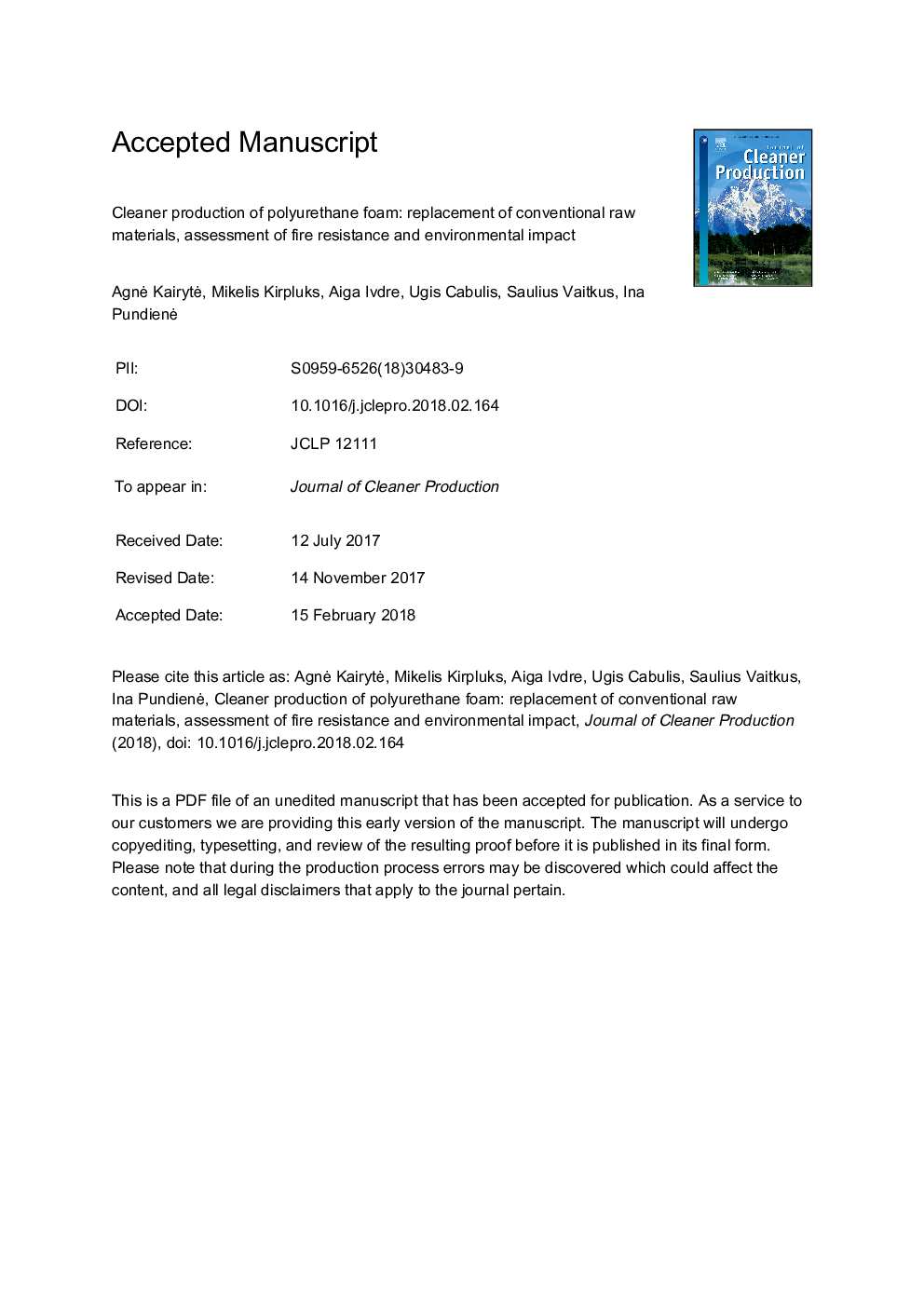| Article ID | Journal | Published Year | Pages | File Type |
|---|---|---|---|---|
| 8097131 | Journal of Cleaner Production | 2018 | 52 Pages |
Abstract
This work presents the results in the field of materials engineering, and they are related to recycling of paper production waste sludge particles at amounts of 10â¯wt% and 20â¯wt% in tall oil polyol-based rigid polyurethane foam with and without tris (1-chloro 2-propyl) phosphate flame retardant. The impact of both systems on physical and mechanical properties, thermal stability, fire resistance and ignitability is studied. Paper production waste sludge particles filled rigid polyurethane foams display better fire performance thus resulting into reduction of the emission of CO2 and CO as well as reduction in average heat release rate. Scanning electron microscopy has shown that paper waste sludge particles and tris (1-chloro 2-propyl) phosphate together act systematically, and synergism between two materials may be observed. It is as well determined that paper production waste sludge particles reduce thermal conductivity by approx. 15% for polyurethane foam with paper production waste sludge particles and by approx. 13% for polyurethane foam with paper production waste sludge particles and conventional flame retardant. Moreover, the substitution of tris (1-chloro 2-propyl) phosphate, petroleum based polyol and hydroflurocarbons with 10â¯wt% and 20â¯wt% of PPWS particles, tall oil polyol and water reduces carbon dioxide emission by 60.8% and 39.6%, respectively, contributing to cleaner production of rigid polyurethane foam.
Related Topics
Physical Sciences and Engineering
Energy
Renewable Energy, Sustainability and the Environment
Authors
AgnÄ KairytÄ, Mikelis Kirpluks, Aiga Ivdre, Ugis Cabulis, Saulius Vaitkus, Ina PundienÄ,
